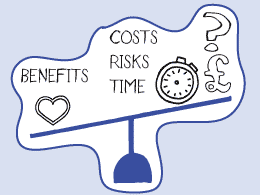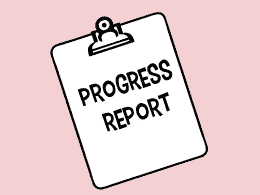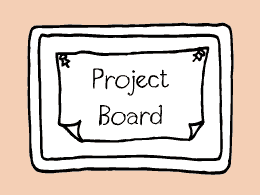 PPRINCE2 is composed of 4 elements: principles, themes, processes and tailoring to suit the needs of the project. All of these elements are briefly described below.
PPRINCE2 is composed of 4 elements: principles, themes, processes and tailoring to suit the needs of the project. All of these elements are briefly described below.
The principles are universal and are the guiding obligations which underpin everything else in PRINCE2. The themes are aspects of project management which must be addressed throughout the whole duration of the project. The processes describe who does what and when. The last element – tailoring - is about ensuring that PRINCE2 is applied sensibly on projects of different type or scale.
The customer and supplier
PRINCE2 assumes that every project is commissioned (i.e. paid for) by the ‘customer’ organization, and the deliverables (called products in PRINCE2) are delivered by one or more ‘supplier’ organizations. Even though the supplier might actually be a business unit of the customer organization – for example the I.T. department – it still performs the supplier role of delivering products.
Benefits
At the end of the project, these products will be used by one or more areas of the customer’s business in their day to day operational activities – what we call ‘business as usual’. The expectation is that by using these products, the customer will benefit in some way.
For example, a project replacing the staff’s old PC’s with new ones would cost a considerable amount. If using the new PC’s makes the staff more efficient, thereby saving the customer money on salaries, then this is a benefit of the project.
PRINCE2 principles
PRINCE2 is based upon 7 principles. Providing they are all applied on your project then you can safely say that your project is a PRINCE2 project.

Business justification
One thing which drives the decision-making on a PRINCE2 project is the need to always be able to justify the necessary investment required to achieve the expected benefits. In other words, there must always be a clear return on investment (measured financially or not), otherwise the project should be closed down. This is one of the strengths of PRINCE2 and one of the things which sets it apart from other project approaches or toolkits.

Learn from experience
This principle says that project practitioners should learn from the experience of previous projects.
Supposing on a previous project we had chosen a particular supplier and they had consistently delivered low quality work late. Not such a great supplier then. It would make sense that on subsequent projects, a different supplier is chosen. In other words lessons have been applied which were learned from previous projects.
In this way, PRINCE2 is an aid to continuous improvement in the way an organization manages its projects.

Clearly defined roles and responsibilities
It would be sensible, when setting up a project and appointing people to the project management team, that people with sufficient authority are assigned to those roles commensurate with their level of accountability on the project. Also, if it’s not clearly defined who is accountable or responsible, the project can quickly fall into a scenario whereby people try to pass the buck.
PRINCE2 devotes a whole appendix to a detailed list of responsibilities for each member of the project management team. The list doesn’t need to be followed in full, but can be tailored to suit the project’s needs.

Focus on products
When planning in PRINCE2 the starting point is always to ask the question “what must be delivered (from the project)?” If this question is not answered with sufficient clarity, the plan will undoubtedly fail. After answering this question, the activities, their sequence, time, resource and cost estimates can be added to the plan. To assist with planning, PRINCE2 offers an extremely effective technique known as the product-based planning technique.

Manage by exception
PRINCE2 takes the view that it’s impossible to forecast what will happen on a project with 100% certainty. So, for the Project Manager to avoid having to escalate to the project sponsor (known as the Executive in PRINCE2) for a decision when every small slippage in time and/or money occurs, PRINCE2 recommends the use of ‘tolerances’. These are the permissible deviations allowed within the plan before escalation to the next level of authority. Tolerances can be set for time, cost, scope, quality, risk and benefits. For example, a project which is allowed to deliver 2 weeks late would have a time tolerance of +2 weeks.

Manage by stages
It’s a risky decision to commit all the money required for a project right at the start and then have no decision point in place to review that decision. But such projects exist and the problem is that they continue to spend money and consume resources even though the project is not going to give a return on investment. PRINCE2 therefore recommends that a project be broken down into a number of ‘management stages’ each stage coinciding with a go/no-go decision by the Executive. This is therefore a far less risky approach to taking investment decisions.

Tailor to suit the project
The last principle in some ways is the most important. It’s about applying PRINCE2 with common sense. Rather than blindly following the guidance in the PRINCE2 as if the words were written in stone it’s much more sensible to think how much of PRINCE2 does your project really need. Thinking of applying the remaining 6 principles will help practitioners here.
The PRINCE2 themes
There are some project management best practices which need to be continuously applied throughout the project. These are what’s known as themes in PRINCE2.

Business Case
This theme describes how a Business Case is developed and maintained throughout the project and how it gets updated, reviewed and approved at the end of each stage. This ensures that the Project Board take decisions based upon whether or not the project remains a worthwhile investment.

Organization
This theme describes a structure of accountability and responsibility for all members of the project management team. Readers who are familiar with the PMI’s Project Management Body of Knowledge (PMBOK® Guide) might be surprised by PRINCE2’s much wider definition of the project management team roles. The recommended project management team structure in PRINCE2 however is extremely flexible and can be tailored to suit the needs of both small and massive projects alike.

Quality
Quality is an extremely important requirement for all projects. PRINCE2 describes who is responsible for defining the expected quality criteria, and a simple process for helping to plan the quality controls required for any project. This theme also describes the quality review technique which is specifically recommended to be used when reviewing the quality of documents.

Risk
PRINCE2 defines risk in terms of uncertainty – either positive or negative. It describes a procedure to be used for capturing, assessing, planning and implementing risk responses, and reporting the status of risks. Risk is addressed throughout the development of plans, and is a major input into the end stage assessments when the Project Board decide whether to continue with the project or not.

Plans
PRINCE2 defines different levels of plan which correspond to the needs of different levels of the project management team. Higher levels of plan – for example the Project Plan for the Project Board – are longer term, but less detailed. Lower levels of plan – for example a Team Plan to be used by a Team Manager – are shorter term and more detailed. PRINCE2 recommends the use of the product-based planning technique to help identify the scope of a plan, and to help define the quality criteria of products.

Change
Any project will be subject to change, and PRINCE2 projects are no different. PRINCE2 however has a mechanism for managing changes which is described in the issues and change control procedure. This outlines a simple process whereby issues and changes are captured, impact analyses are made, decisions are taken, and actions are implemented, tracked and reported upon.

Progress
The tolerances described earlier are essentially how a higher management level delegate authority to a lower level – for example the Project Board to the Project Manager. The performance of the stage and/or project against those tolerances needs to be tracked and reported. This occurs both on a regular basis between both Team Managers and Project Manager, and between the Project Manager and the Project Board.
Reports however are just one of the controls in PRINCE2 which enable each management level to monitor the performance. The end of stage assessments of the Project Board are a major control because it is where it decides whether to continue or not. In this way, the Project Board takes the major decisions before the Project Manager spends any money or authorizes any work.
The PRINCE2 processes
Another strength of PRINCE2 is its description of what needs to be done, when, and by whom. This is what the processes describe. The processes are where the PRINCE2 themes are applied. They start, in fact, even before the project begins and continue to the end of the project.

Directing a Project
Whilst this is not the first process which is performed on a PRINCE2 project, it’s the most important in many ways. This is because all of the most important decisions about the project are taken in this process – for example, is it a worthwhile investment; shall we commit the funding; shall we continue with the project; shall we close the project; what shall we do about changes and risks; are we on target. These decisions are ones for the Project Board which is the highest level of authority within a PRINCE2 project.
The Project Board consists of 3 roles: the Executive - responsible for funding the project and ultimately accountable for the project; the Senior User – responsible for specifying and realizing benefits; and Senior Supplier – responsible for delivering the products. Collectively the Project Board takes all the major decisions about the project.

Starting up a Project
This is the first process and is actually performed before the project begins. Its aim is to gather a high level understanding of: why the project is needed; who the main stakeholders are; the lessons to be learned; the final (project) product and how the products will be delivered. All of these things are documented in a Project Brief which forms a high level overview of the project. A plan for the first stage will also be developed. Both documents (management products) will be reviewed and approved (or not) by the Project Board before committing to the first stage of the project.
The key question for the Project board to answer at the end of this process is "is this a sensible and worthwhile project?" If it is, then they can give authority to the Project Manager to begin the first stage of the project.

Initiating the Project
This process covers the work done by the Project Manager during the first stage. It’s where more detailed planning and preparation takes place and results in the development of a document called the Project Initiation Documentation (PID).
The PID is actually a collection of several other documents including: a Project Plan – detailing the project costs and timescales and identification of the management stages; a Detailed Business Case – describing the project costs versus benefits; strategies for the management or risk, quality, configuration management and communications.
The PID is presented to the Project Board along with a plan for measuring benefits, and a Stage Plan for the next stage. If the Project Board decide that the project is still worthwhile and all the necessary controls and strategies are in place and that the Project Plan is feasible and realistic then they can approve the PID and Stage Plan and give authority to the Project Manager to proceed to the next stage.

Controlling a Stage
Until now, only documents used to plan and manage the project (known as management products) have been developed. Now it’s the time to start delivering ‘specialist’ products i.e. those products which will be handed over to the customer for them to use in order to realize benefits. The current Stage Plan identifies the pieces of work (Work Packages) required to design, develop and to test such products.
Such specialist work is done by teams, and it is the Project Manager’s responsibility to authorise such work to Team Managers. They, in turn, report progress back to the Project Manager using reports. The Project Manager keeps any issues and risks under control, escalates any which are beyond his/her authority. All of this occurs within this process and covers all of the day to day management of the stage. At regular intervals the Project Manager will report the progress of the stage up to the Project Board.
Providing the stage remains within the tolerances allocated by the Project Board, there is no need for the Project Manager to escalate tolerance threats. If however, tolerances are forecast to be breached, an Exception Report it written to inform the Project Board so they can make an informed decision.

Managing Product Delivery
This process is performed by Team Managers and is where all of the specialist work is performed by the supplier’s teams. It’s where, on a software project for example, specialist software development methodologies such as SCRUM or Extreme Programming might be employed. At some point during the process, the team will hand over products to users, quality controlled and signed off by the customer.

Managing a Stage Boundary
Just before the end of the stage, the Project Manager must prepare the next Stage Plan, update the Business Case, Project Plan and review the risk situation. A report is prepared for the Project Board summarising the current status. The Project Board are then able to take a go/no-go decision. If the decision is to proceed to the next stage, this triggers off the Controlling a Stage process again. This sequence is repeated for every subsequent stage.

Closing a Project
At the end of the final stage, or if the Project Board prematurely decided to stop the project, the project needs to be closed. This process is designed to make a clear break between project activities and the resulting operational, or business as usual work. It is where the special products are handed over to the operational and support teams, providing they meet the necessary acceptance criteria.
Any loose ends are tied up, and handed over to those in a position to deal with them. A report is presented to the Project Board outlining the achievements of the project, including what was delivered, the costs, timescales, and the effect of issues, changes and risks. The report summarizes what lessons were learned on the project, ready to be passed onto subsequent project teams. If the Project Board are satisfied that there is nothing more for the project to do, that the products have been accepted by the users, then they can authorise the closure of the project.
Tailoring
Understanding the principles, processes and themes is one thing, applying them effectively to suit the needs of your project is another thing.
The things which you need to consider for tailoring are the 7 themes. Ask yourself, for example, what would be an appropriate risk management approach for your project? When will risk management activities take place? Who will perform them? What tools or techniques will you need? You tailor many of the PRINCE2 themes when you write the 4 management strategies (risk, quality, configuration management and communication) during the initiation stage of the project.
You also need to consider the tailoring of the processes. Do you, for example, need both Starting Up a Project and Initiating a Project at the beginning of the project? Could they for example, be combined together?
There are 26 management products (logs, registers, reports, plans etc.) which are defined in PRINCE2. They help you to plan, manage and control your project. Ask yourself do you need all of them? Perhaps not on a small project. Perhaps some could be combined together – for example, the issue and risk registers. Perhaps you don’t need some at all.
What next?
If you think that your organization could benefit from applying PRINCE2 on projects, think of joining us on one of our courses. Or, if you want to improve your own project management capability, or simply want to improve your resume, then sign up for one of our 3 study options and get accredited.
You can study either by attending a classroom PRINCE2 course if there’s one in a city near you. Alternatively, you can sign up to join a virtual PRINCE2 course, which has the benefit that you can become accredited without even stepping outside your front door. All you need is an internet connection and a computer. The third option is to self-study by using one of our eLearning courses.
Whichever study option you choose, we hope that you will enjoy learning about PRINCE2 as much as we enjoy helping people learn all about it.
One thing is for certain though, you will certainly find it useful in your workplace or career in the future.